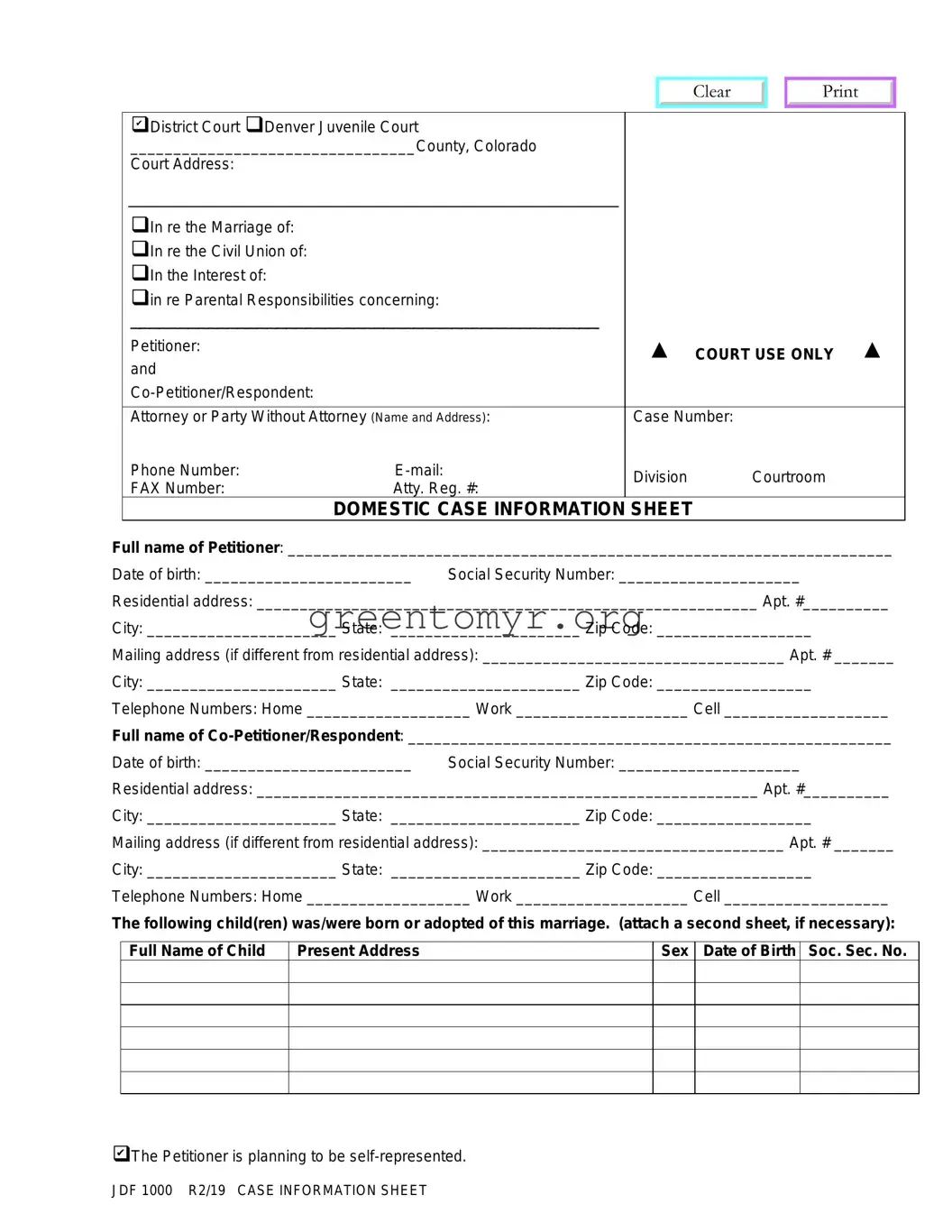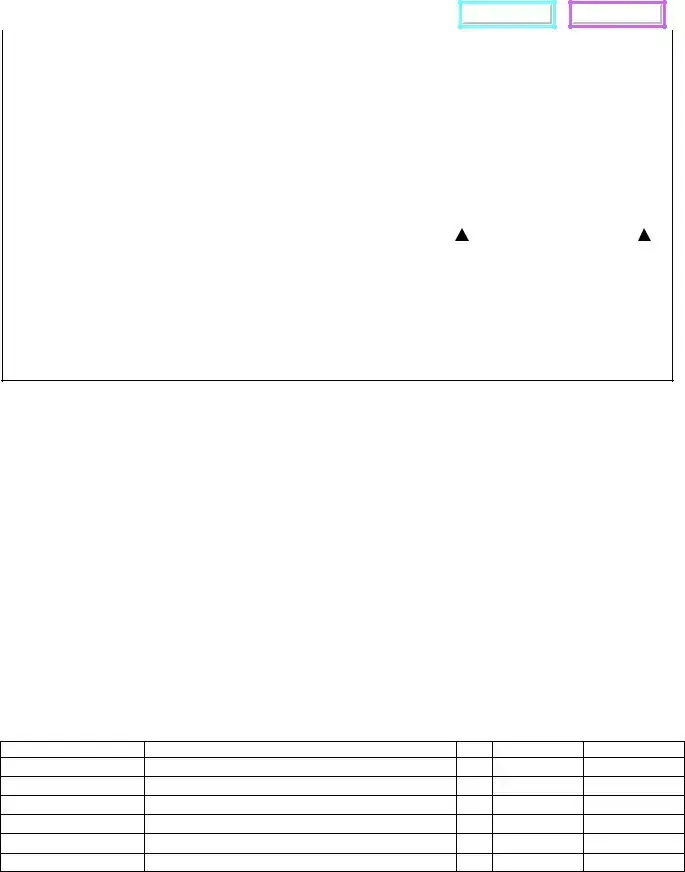Filling out the JDF 1000 form requires careful attention to detail. One common mistake occurs when individuals leave blank spaces in the required fields. Missing information can lead to delays in processing, or worse, the rejection of the form. Always ensure that every applicable section is filled in completely. It's crucial to provide thorough details about both the petitioner and co-petitioner or respondent.
Another frequent issue is not including accurate contact information. Entering incorrect phone numbers or email addresses can hinder communication from the court. Double-check that the contact details provided are current and accurate. This prevents you from missing important updates or court notices.
Many people also underestimate the importance of correctly identifying the court. The form has specific designations for district courts and juvenile courts. Failing to select the appropriate court can lead to complications in the case's jurisdiction. Verify that the chosen court aligns with your situation.
Using outdated versions of the form is another mistake. Courts may update forms regularly, and using an old version can cause problems. Always download the latest version of the JDF 1000 form from a reliable source to ensure compliance with current requirements.
Some individuals mistakenly think that only the petitioner needs to provide their information. It’s important to include details for both the petitioner and the co-petitioner or respondent. Omitting this can create confusion and result in a form that is incomplete.
Omitting or inaccurately completing the child information section is yet another common mistake. The form requires accurate details about any children involved, including their full names, addresses, and dates of birth. Failing to provide this information correctly may delay the proceedings.
Signatures are often taken for granted. Some individuals forget to sign the form entirely or fail to date it. Without a proper signature, the form will be considered unofficial, which will halt the process. Always ensure your signature and the date are included before submission.
Individuals also tend to overlook the option of indicating whether they are self-represented or have retained an attorney. Choosing the wrong option can lead to confusion regarding legal representation. Be sure to clearly note your choice on the form.
Another mistake is not making copies of the completed form. After filling out the JDF 1000, always keep copies for yourself. This protects you in case the original gets lost or if you need to reference the information later.
Finally, failing to seek help when necessary can lead to errors. If you find certain sections confusing, consult a trusted friend or legal professional. Taking the time to ask questions can prevent simple mistakes and ensure your form is filled out correctly.

